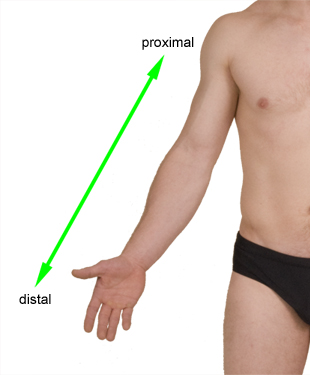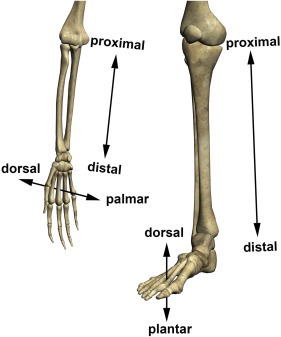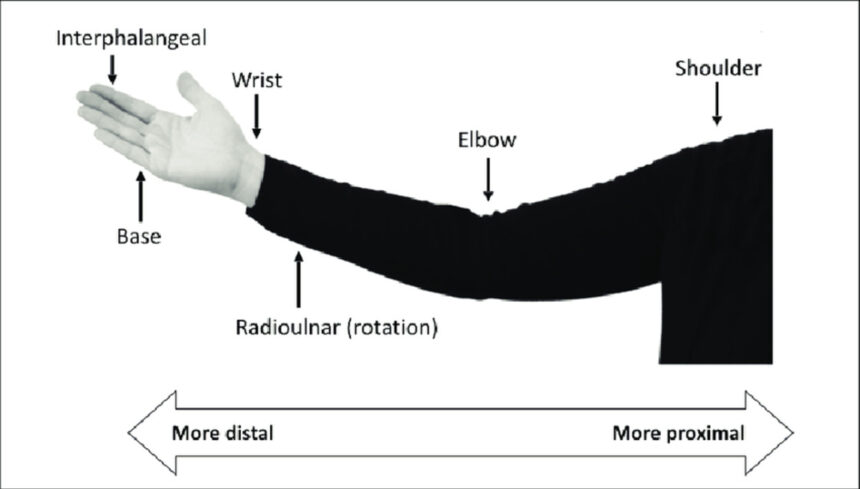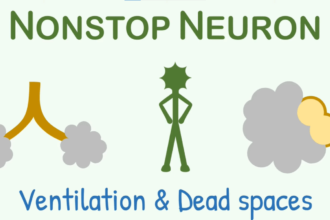We’re going to talk about the directional terms proximal and distal and answer the questions.

What are the definitions for proximal and distal and what ways are they used in anatomy?
The word proximal means closer to the origin and the word distal farther from the origin And so one way we do it, especially with the limbs, is we say what’s the origin. Well, in the upper limb the origin is basically the shoulder where the whole upper limb anchors to the trunk.
So we would say, well the elbow is proximal and the wrist is distal because um elbow is closer to the shoulder than the wrist or the wrist is proximal. But your knuckles are distal. And so when we look at this we’d say the elbow is proximal to the wrist. And in contrast the wrist is distal to the elbow.
That’s one way that these words proximal and distal are used. And another way is we take a look at the bones of the hand There’s our carpals the metacarpals and there’s the phalanges. And so when we look at these three phalanges on your little finger this one is called the middle phalanges. So what do they call these other two. Well they call this one the proximal phalanges. And this one the distal phalanges Because it’s farther away in the proximal phalanges is closer to the hand.
Another way we use it is just in the region. If we’d say this is the proximal part of the femur bone, and this is the distal part of the femur bone, that’s another way. It’s very often used. And then also if we have any type of a tubular organ, in this case it’s the nephron. See more Wikipedia
There’s the glomerulus. And here we have these convoluted renal tubules. Renal means kidney convoluted means they’re curly. And this is the loop of Henle. And then this is another group of convoluted renal tubules. And there’s the collecting duct.
Also Read….
- Labetalol 100 mg (Trandate): Uses, Dosage and Side Effects
- Temazepam 15 mg (Restoril): Uses, Doge, Side Effects
- Fexofenadine 180 mg Uses Dose Side Effects
So they’re like hey we got two types of convoluted tubules. So what do we call them Well this one they call it the proximal convoluted tubule because it’s the one closest to the glomerulus where it starts. And then this one they call it the distal convoluted tubule because it’s farther away. And that, my friends, are the terms proximal and distal in a nutshell.

In this article, the following frequently asked questions will be answered:
- What is the difference between medial and lateral body?
- What body parts are proximal and distal?
- What do the terms superior and inferior mean?
Superior and Inferior
These terms refer to the vertical axis of the body, and a part higher than or above another part of the body is called superior to it; Conversely, the other part of the body is inferior to the first. So the head is better than the neck, the neck is better than the torso and the torso is better than the legs.
When designing machines, an understanding of anatomical terms such as medial and lateral, proximal and distal, and superior and inferior is helpful. These terms can be applied to the placement of components on the centerline of the load machine; at the start or end point of a process or system; and the location of elements within a vertical structure or stack.




